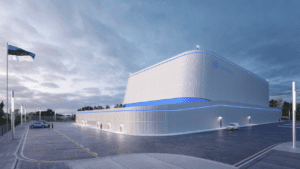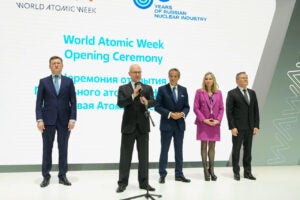Just as products are packaged so that they can be contained, handled, made mobile, and have their use sequenced, “packaging” work can bring the same benefits. To package work, planners create detailed workflows in advance rather than allowing construction to unfold in a self-assembling, freeform, decentralized way. Capital project construction can rely on a project management method known as advanced work packaging (AWP) to accomplish the same manageability and flow.
The difference between advanced and standard work packaging is the timing. Standard systems bring in construction stakeholders close to the execution stage, but AWP is construction-driven and involves those stakeholders in initial planning. Early involvement of the construction stakeholder allows for constructability to be realized and more comprehensive plans to be developed, resulting in more accurate estimates of scaffolding and other support services that often drive up costs.
AWP begins in preconstruction and continues through commissioning and turnover. The goal is to achieve upfront alignment between engineering, construction management, and construction execution, largely by basing construction sequencing on the project’s required field installations and detailed engineering requirements.
Advanced work packaging is beneficial to owners as well as contractors. It achieves:
- Lower project costs. According to the Construction Industry Institute (CII), projects can experience up to 10% decreases in total installed cost, with increased savings for owners and increased profitability for contractors.
- Improved safety. Using AWP, many projects have zero lost-time accident records.
- Time savings. Shorter schedules are driven by progressive turnover.
- Higher quality. AWP results in fewer punch-list items.
- Reduced risk. AWP affords greater overall project clarity, and therefore certainty.
- Higher field productivity. CII cites an increase in field productivity of up to 25%.
The Process of Packaging Work
Engineering, procurement, and construction (EPC) teams are the primary assemblers of AWPs, since these teams understand the processes and goals of a given project most completely. Work packages typically contain descriptions of work, summaries of available resources, procurement details, time and cost estimates and controls, a means of progress tracking, and risk assessments.
Although AWP is iterative, the initial “launching” document is typically the Path of Construction (PoC). The PoC is a high-level “how-to-build” guide that starts with the completion date in mind and works backward to account for all the supporting variables. PoCs are more detailed than the commonly used construction management plan, as they incorporate sophisticated scheduling and contingencies.
The bedrock principle of AWP is to take a project’s overall scope and break it down into construction work packages (CWPs). The Advanced Work Packaging Institute identifies a CWP as “a logical and manageable division of work within the construction scope.” Construction managers create CWPs and work with clients to integrate budget and schedule information with performance monitoring; they also lay out a sequence of work that optimizes resources. At the CWP level, the activities outlined are area-specific, including such details as man-hours and required materials. An approximate time estimate for a given CWP should not exceed 40,000 hours of project work. The PoC should remain the point of reference to guide the project.
Engineering work packages (EWPs) are used to develop CWPs and they are created with construction needs and sequencing in mind. According to the Advanced Work Packaging Institute, EWPs include drawings, procurement deliverables, specifications, and vendor support. EWPs are released in stages according to the needs of the CWPs.
Once CWPs are finalized, they are broken down into executable packages known as installation work packages (IWPs). This point in the process is considered the “workface.” Similar to the concept of an interface, the workface represents the boundary between high-level planning (the CWP) and on-the-ground efforts (the IWP). Constructor workface planners are responsible for the work breakdown and hand off the IWPs to crews before the start of work. Workface planning, as opposed to field-execution planning, proactively organizes and delivers to construction foremen everything they need to conduct fieldwork safely and efficiently.
IWPs are execution plans for work that falls within a given scope, generally “small enough that it could be completed by a single-foreman team, typically in a one- or two-week time frame,” according to the Advanced Work Packaging Institute. Typically, no IWP exceeds 1,500 man-hours, and occasionally they will be as short as a single day or shift if the work is critical. They will include everything needed to complete the work, including details such as productivity expectations, equipment and materials needed, scaffold plans, and temporary power needs, to name just a few. IWPs are the smallest packaged units within an AWP.
Industrial and commercial construction companies have been improving upon the traditional design-bid-build delivery model for years, using various new delivery models and front-end planning. AWP takes integrated, collaborative planning a step further, since it continues into the execution phase.
The Time for AWP Is Now
AWP provides a foundation of detailed plans to support accurate project data collection using collaborative workflows. This requires standardizing data collection and assigning responsibility for each IWP, tracking consistently to one resource to provide accountability and to ensure a seamless transfer of information between project stakeholders. Software and digital tools, especially virtual design and construction models, can help support these efforts. Models and their integrated components can keep estimates up-to-date as changes happen in real time.
For EPC applications, a theoretical AWP workflow includes a preplanning phase in which schedules from historic projects, along with quantities, are reviewed. This information is then used to plan a sequence of work for the current project, determine its duration, and estimate material quantities. Typically, Monte Carlo scenarios are run; 2D drawings and 3D models are iteratively updated; and by the end of the preplanning phase, estimates and schedules are much more accurate than they are when arrived at using traditional project delivery. All project stakeholders are part of the preplanning process, which dramatically reduces project risk.
When the planning stage of a project begins, technology helps support the creation of CWPs by accommodating the input of exact material quantities, budgeted hours, safety protocols, and more. The output is robustly populated IWPs. Contractors are set up for success by having a longer runway to plan and develop IWPs that provide clear instructions to craft supervision on how to proceed with their tasks and more time to focus on safety aspects of the work. As progress is tracked in each IWP, reports generated provide insight on performance to quickly identify areas in need of attention. Whether it be due to resources, material, weather, or changing conditions, the project stakeholders can make decisions early to offset impacts and keep the project moving as planned. Project management software also incorporates contract and document management that provides further project efficiencies for a lean project approach.
Owners looking to reap the benefits of AWP should work with a construction firm that has the necessary project management workflows and software in place. All stakeholders must approach the project with an openness to cross-disciplinary collaboration. The result is a successful project that is inherently safer, on-time, and on-budget, producing a high-quality product.
—Shawn Anderton is vice president and general manager of Western U.S. Operations with Graycor Industrial Constructors.










